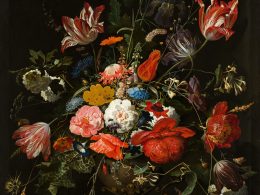Introduction: In the realm of art, there is an undeniable allure to the interplay of light and darkness, revealing hidden dimensions and evoking emotions. Yet, for centuries, art lovers and scholars have grappled with the challenge of fully appreciating the intricate details and nuances of masterpieces cloaked in obscurity. However, a groundbreaking movement is underway, harnessing technology to illuminate these hidden treasures and bring them into the light for all to behold. This article explores the remarkable strides being made in the world of art illumination, revolutionizing the way we experience and understand renowned artworks.
Unveiling the Secrets: The convergence of art and technology has birthed innovative solutions to the age-old problem of poorly lit or deteriorated artworks. Museums, galleries, and conservationists have embarked on a mission to unlock the secrets of these obscured masterpieces, breathing new life into the art world.
Cutting-edge Lighting Techniques: The advent of advanced lighting techniques has played a pivotal role in transforming how we perceive art. By employing a combination of sophisticated lighting systems, such as LED technology and fiber optics, experts can carefully calibrate and highlight specific elements within a painting or sculpture. These techniques not only enhance the overall visual experience but also reveal intricate details that were previously concealed.
Digital Imaging and Restoration: In an era driven by digital innovation, art restoration has taken on a new dimension. Through the use of high-resolution scanners and powerful software, specialists can meticulously analyze and digitally restore faded or damaged artworks. By recovering lost colors, repairing cracks, and recreating missing elements, these advancements have breathed new life into many renowned pieces, allowing viewers to appreciate them in their original grandeur.
Virtual Reality (VR) and Augmented Reality (AR): The marriage of art and virtual reality has opened up a world of possibilities for art enthusiasts. VR and AR technologies provide immersive experiences, transporting viewers into virtual galleries where they can explore masterpieces with unprecedented interactivity. This digital realm allows for deep dives into an artwork’s historical context, offering insights that go beyond what is visible to the naked eye.
Democratizing Art Appreciation: One of the most significant impacts of illuminating art’s masterpieces is the democratization of art appreciation. Traditionally, access to famous artworks was limited to those who could visit museums or galleries. However, the integration of technology has broadened the scope of accessibility, allowing individuals from all corners of the globe to partake in the wonder of renowned artworks. Online platforms, virtual exhibitions, and digital archives have made it possible for art to transcend physical boundaries, empowering people to engage with cultural heritage regardless of their geographic location.
Challenges and Ethical Considerations: While technology has ushered in a new era for art illumination, it is not without its challenges and ethical considerations. Striking the delicate balance between preservation and intervention is a constant concern for conservators and curators. Ensuring that technological advancements are employed responsibly, without compromising the integrity of the original artwork, remains a critical task.
Conclusion: The journey from darkness to light in the realm of art has brought about a transformative shift in how we perceive and experience masterpieces. Through the integration of cutting-edge lighting techniques, digital imaging, and virtual reality, the art world has become more accessible and engaging than ever before. As technology continues to advance, one can only imagine the future possibilities that await, promising to unravel the mysteries and hidden treasures of art for generations to come.
(Note: This article aims to highlight the advancements in art illumination and the impact of technology on art appreciation. It is essential for the author to conduct further research, interview experts, and verify information to ensure accurate reporting and attribution.)












